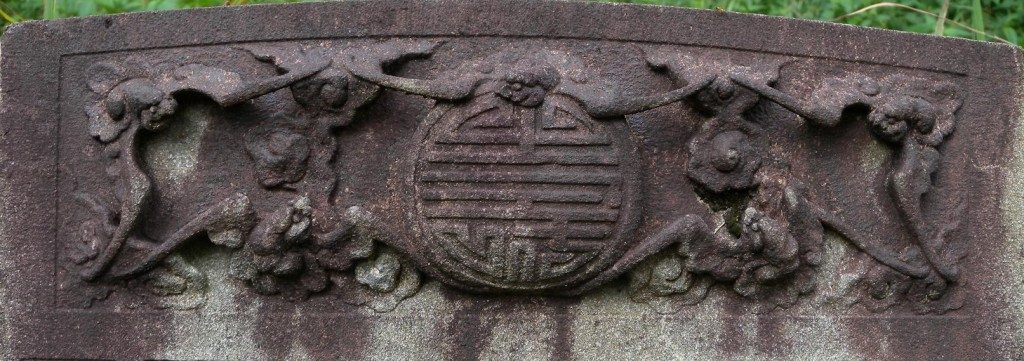
By Yik Han & Claire Leow
Some of the tombs at Bukit Brown have elaborate carvings of famous Chinese mythological figures, fables and personified values. These serve as teachings left by the deceased for his/her descendents, by way of bequeathing the lessons of life. Here, we report on three panels found at the tomb of Ong Sam Leong, the grandest at the site.

Found on the front panel on the altar of the Earth deity for Ong Sam Leong’s tomb is this intricate carving of a Chinese fable. The legend of “Zhao Yan pleads for Longevity” (赵颜求寿) is mentioned in the “Romance of the Three Kingdoms,” an epic in the Chinese literary canon.
Zhao Yan (赵颜) was a poor lad who lived during the era of the Three Kingdoms. One day, he was tending to his fields with his buffalo when he met Guan Lu (管辂), a man skilled in divination. Guan could tell that Zhao had only 3 more days to live. As Zhao was a filial child, Guan decided to help him. He asked him to bring wine and meat to the South Hills (南山) where he would find two old gentlemen playing chess. Zhao was to serve them the wine and meat as they played without disturbing their game.
The old men were the North Dipper (北斗) and South Dipper (南斗) star deities. At the end of their game, they were obliged to repay Zhao for his food and drink. The North Dipper added a “nine” in front of the two characters “ten nine” next to Zhao’s name in his birth register, extending Zhao’s life to ninety-nine years (folklore had it that the South Dipper was in charge of birth while the North Dipper was in charge of death). And that was how Zhao lived to a ripe old age.
In the panel, Zhao Yan is on the right with his buffalo. The two Star Deities are seated at the table, absorbed in their game. The boy on the left is an attendant of the deities. This fable essentially tells us filial piety is a commendable virtue deserving reward.
Speaking of longevity, here’s another panel.
FU LU SHOU (HOCK LOCK SIEW) 福禄寿

Fu Lu Shou carved panel on Ong Sam Leong’s tomb
In many Chinese rituals for auspicious ocassions or in funeral rites, these three characters (literally written or personified) play a key role.
Fu (福) represents good fortune, Lu (禄) represents prosperity and Shou (壽), longevity. In Chinese teachings, the values are personified, with Fu on the right hand of the view, Lu in the centre and Shou on the left. Fu Lu Shou are also called Stars, as they are aligned with a celestial body in Chinese astronomy, and statues, paintings, carvings or other artistic renditions of these stars are common in Chinese homes, especially those who follow Taoism.
It is worth noting that in the Chinese value system, Fu/Fortune is distinct from Lu/Prosperity, and Fortune signifies blessings rather than mere wealth. These blessings include health, heirs, or virtues. Often a child, especially a son and hence heir, is used to symbolise Fortune.
Lu/Prosperity also refers to more than just material wealth, but weightiness in other matters, such as intellect, influence and social status. Deer is associated with Lu/Prosperity, as the Chinese characters for both are homophones.
Shou/Longevity is often also represented by peaches, cranes and bats. Bats are also used to symbolise Fu/Fortune as they are again, homophones.

Source: http://bukitbrown.com/main/?p=1644






























